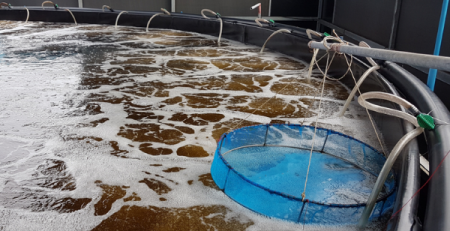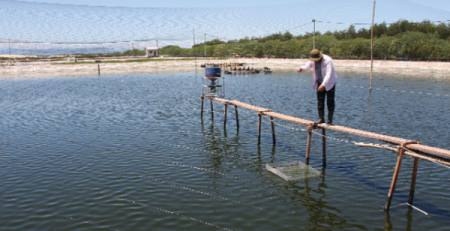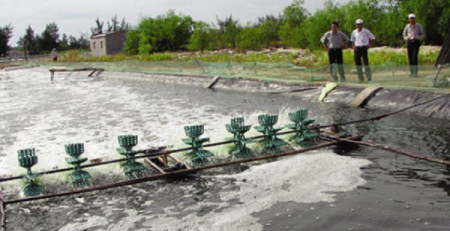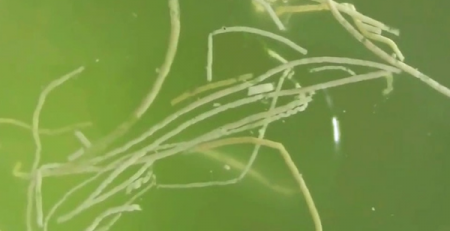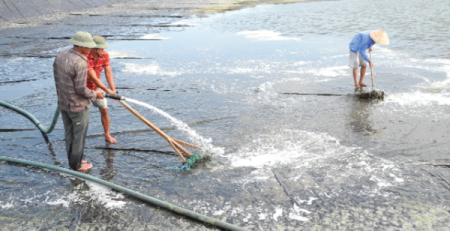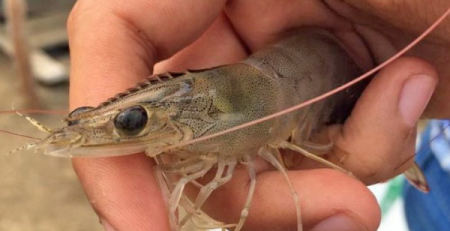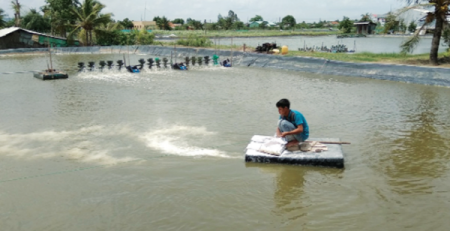Preventing and treating EHP
Nội dung bài viết
- Microsporidian microscopic disease on shrimp caused by Enterocytozoon hepatopenaei parasite (EHP), they attack shrimp by destroying the digestive system of shrimp. Disease prevention is considered the best solution to prevent major damage from EHP caused to farmed shrimp.
- Diagnostic
- Control disease
- Breed control
- Pond management
- During the breeding period
Microsporidian microscopic disease on shrimp caused by Enterocytozoon hepatopenaei parasite (EHP), they attack shrimp by destroying the digestive system of shrimp. Disease prevention is considered the best solution to prevent major damage from EHP caused to farmed shrimp.

Diagnostic
The detection of the disease can use the gene detection tools of germs such as PCR (polymer chain reaction), LAMP (Loop-mediated isothermal amplication) to test samples taken from infected shrimp or post shrimp. Microscopes can be used for microscopy but are more difficult to detect because spores are very small in size.
Control disease
There is no specific treatment. Therefore, it is only possible to deal with EHP with integrated solutions: Biosecurity control from hatchery to pond preparation and then good pond management solutions. The inspection and control of pathogens from shrimp seed is very important. Shrimp seed can be controlled to see if EHP is contaminated by PCR.
In farms, pond preparation is very important. Because EHP has good resistance to conventional disinfection methods, it is difficult to remove pathogens from the system. It is recommended to use hot lime (CaO) to treat the pond so that the pH of the pond bottom can be reached during the 11-12 higher recovery process to remove the EHP pathogen.
Breed control
In shrimp hatcheries, normal control with viral pathogens must focus more on biosafety in the direction of actively preventing bacterial and parasitic diseases. The hatchery must have a quarantine zone and have strict control over pathogens caused by viruses, EMS / AHPND and EHP before being put into production. Shrimp seed also needs to meet the general standards of health and quality.
The weaker shrimp samples should be collected and stored in 95% alcohol and sent to a reputable laboratory for PCR testing. Some other diagnostic methods may also need to be performed, such as fresh scans, histopathological diagnosis or specific isothermal amplification methods to test the feces of shrimp seed.
With fresh food, the pathogen should be carefully controlled, should not use fresh food caught from the area near the hatchery, breeding area, direct feeding.
Control of pathogens by PCR should be carried out throughout the seed production process. In addition, larval rearing methods by biology and microbiology should be used to control bacterial diseases such as EMS / AHPND.
Pond management
EHP infection can spread very quickly in shrimp ponds during culture. The active minimization of spore accumulation can reduce the level of EHP harm, so the sediment of the pond must be properly treated before stocking. The first step in pond preparation is to remove the deposited organic matter. If the pond is lined, sludge can be removed by pressure washing. If the soil pond, the mud can be dredged and the soil will be dried in the sun and plowed again.
To eliminate more spores, the entire pond bottom should be treated with acid solution with a pH of less than 4 or with an alkaline solution with a pH greater than 12. The soil substrate is recommended to be disinfected with lime with live rate 6,000 kg / ha or more. The pond bottom must be completely dry. Plowing lime into dry mud layers to a depth of 10 – 12 cm, then moisten the sediment to activate lime. When the soil has been moistened, the pH will increase to 12 or more in a few days and then gradually return to normal when the lime turns into calcium carbonate.
If establishments do not experience continuous reinfection problems from neighboring ponds, pond disinfection may not be necessary between crops. The change in shrimp growth rates between crops is a good indicator of EHP spores.
During the breeding period
After checking the pond bottom, the pH has returned to normal, applying the necessary amount of microorganisms to help decompose organic substances and limit the competition of vibrio bacteria in the pond before stocking. During the breeding process, regularly take the waste out with the siphon system. Maintaining stable water color with indicators such as pH, alkalinity, oxygen, NH3, H2S … within the threshold suitable for shrimp growth and development.
Continuously checking shrimp quality; especially when checking shrimp feeding to see the feeding and movement of shrimp, turbidity, including size and color of liver and pancreas. If there is an abnormal situation, quickly resolve it. Feed new produced foods and ensure quality, right for the needs of shrimp by each age. Improving food, vitamins, nutrients and other supplements helps improve shrimp condition. Special attention should be paid to liver and pancreas to help shrimp with high resistance and high survival rate. Take note of the details of the farming process steps. Use that information to improve shrimp farming more and more developed.
Contom.vn


